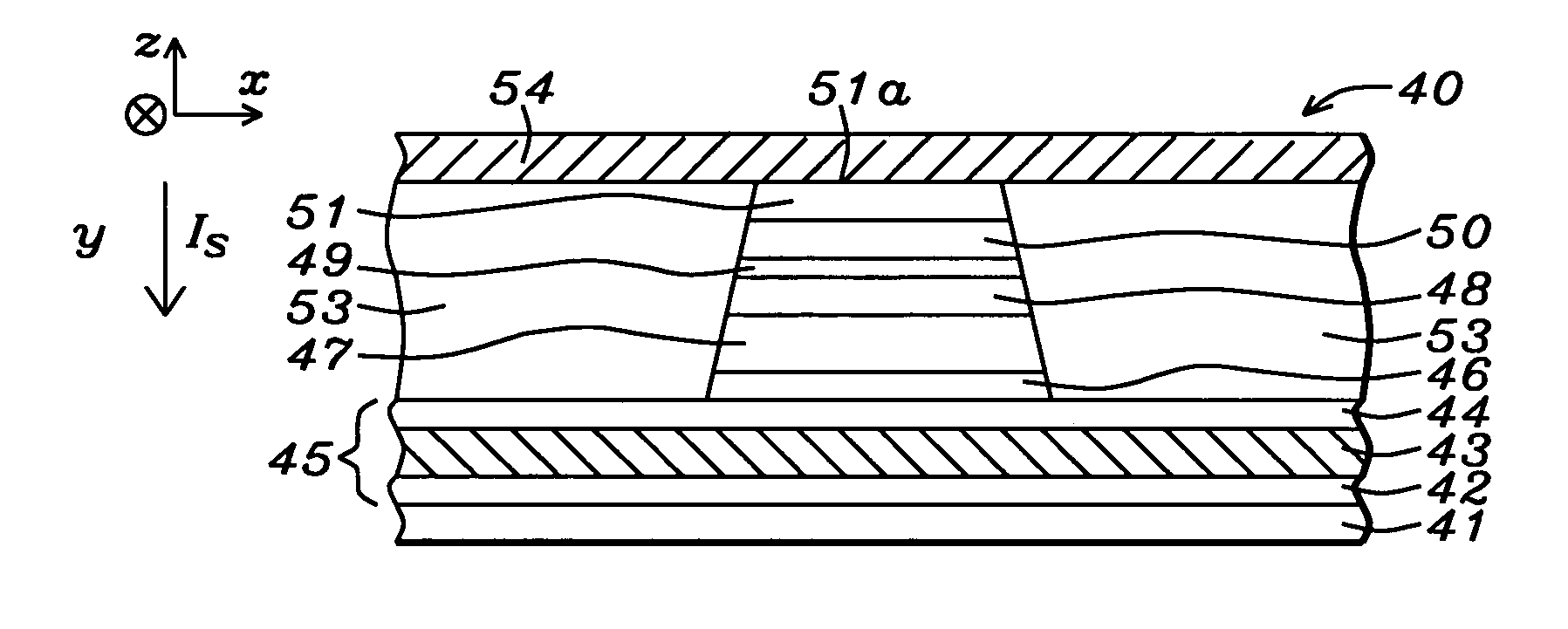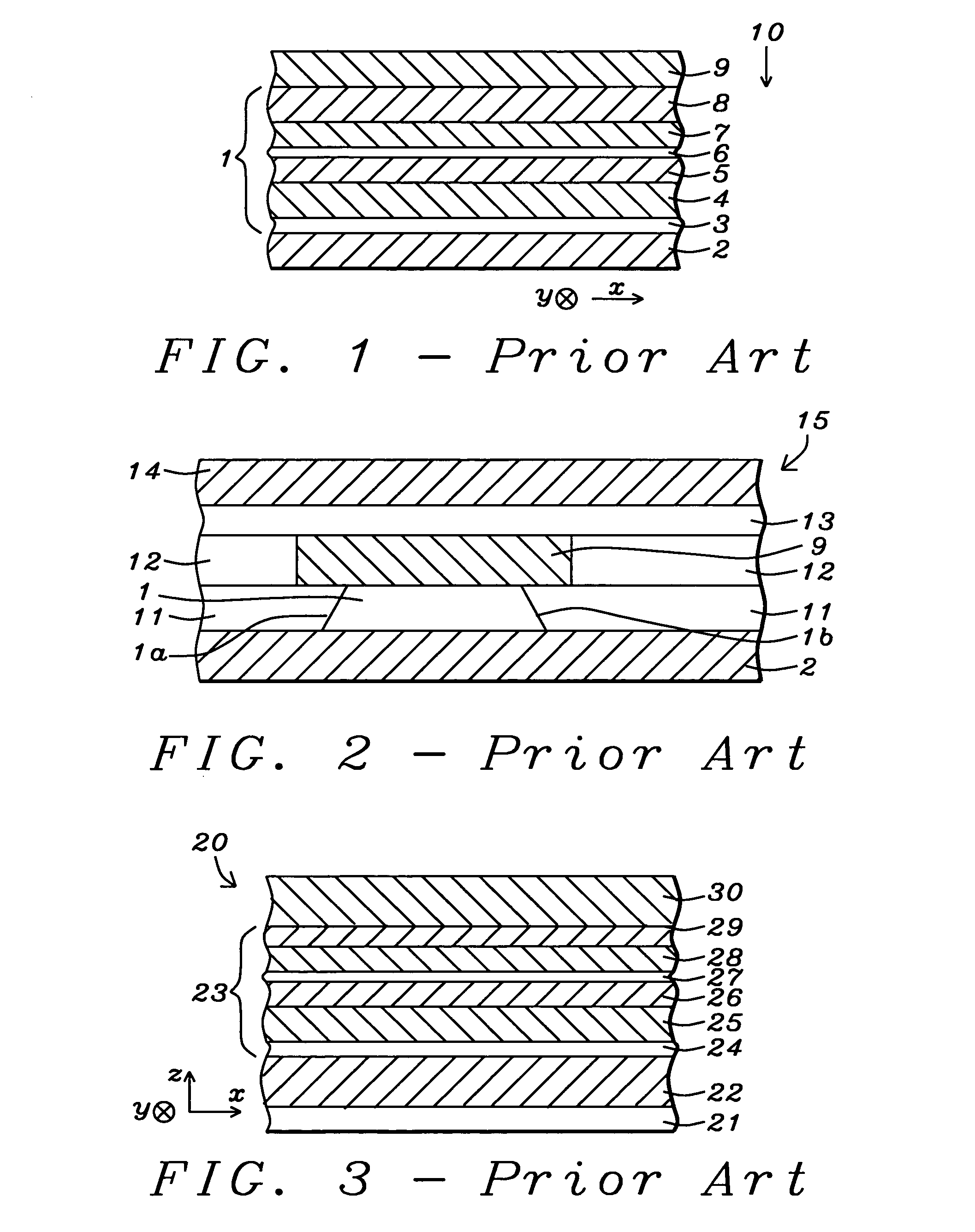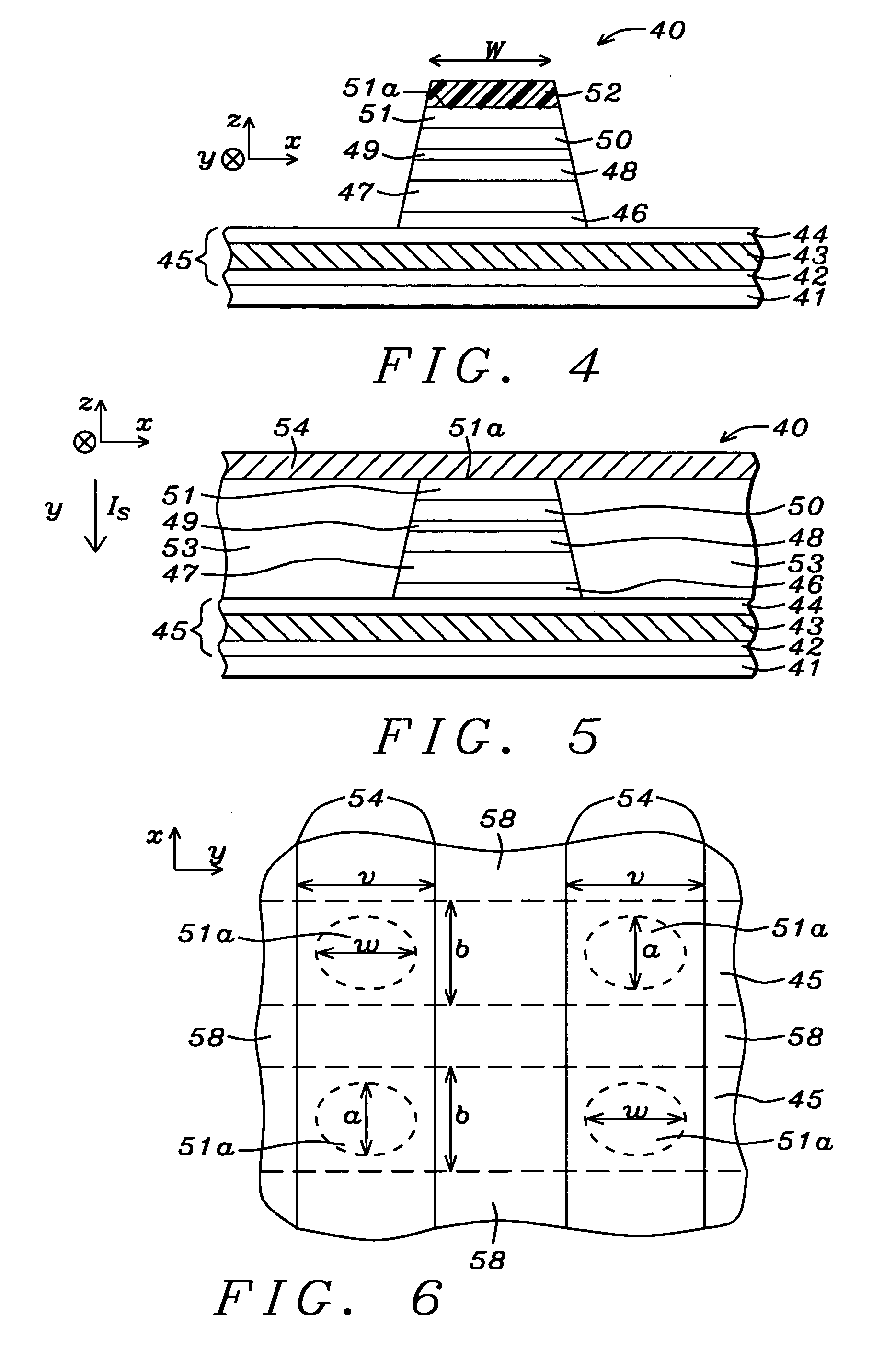Novel underlayer for high performance magnetic tunneling junction MRAM
a magnetic tunneling junction and underlayer technology, applied in the field of high-performance magnetic tunneling junction elements, can solve the problems of low resistivity, high sensitive growth of ta layers and nicr/nifecr layers to starting surface conditions, inconsistent device performance, etc., and achieve the effect of high resistivity
- Summary
- Abstract
- Description
- Claims
- Application Information
AI Technical Summary
Benefits of technology
Problems solved by technology
Method used
Image
Examples
first embodiment
[0034] An MRAM structure formed according to the present invention will now be described. Referring to FIG. 4, a partially completed MRAM structure 40 is shown that includes a substrate 41 which may be silicon or another semiconductor substrate used in the art that typically contains other structures and devices such as transistors and diodes. A bottom electrode 45 which is a composite layer having a seed layer / conductive layer / capping layer configuration is formed on the substrate 41 and is typically coplanar with an insulation layer (not shown).
[0035] It is understood that the MRAM structure is part of an MRAM array in which multiple bottom electrodes are formed in a first conductive layer and multiple top electrodes such as parallel bit lines or word lines are formed in a second conductive layer above the bottom electrodes. An MTJ element is formed between a first and second conductive layer at each location where a top electrode crosses over a bottom electrode. The bottom electr...
second embodiment
[0050] Referring to FIG. 7, the bottom electrode 55 is comprised of a seed layer 42 and an overlying conductive layer 43. The seed layer 42 and conductive layer 43 have a thickness and composition as previously described. For example, the bottom electrode 55 may have a NiCr / Ru, NiCr / Cu, or a Ta / Cu configuration. It should be noted that a Ru or Cu surface is easier to clean than a conventional Ta capping layer on a bottom electrode. Other bottom electrode configurations that include a capping layer are acceptable although a capping layer for the bottom electrode is not necessary in this embodiment. The second embodiment affords a greater flexibility in selecting a bottom electrode composition because the subsequently formed α-TaN seed layer isolates the MTJ stack from the influence of the bottom electrode 55.
[0051] An MTJ stack of layers is disposed on the bottom electrode 55 by sequentially forming a seed layer 56, AFM layer 47, SyAP pinned layer 48, tunnel barrier layer 49, free la...
third embodiment
[0054] In a third embodiment depicted in FIG. 8, a magnetoresistive (MR) read head 60 hereafter referred to as a TMR read head is shown in which an MTJ element is formed between a bottom shield (S1) 65 and a top shield (S2) 75. An α-TaN layer is incorporated as a capping layer in the bottom shield. Although the MTJ element in the exemplary embodiment has a bottom spin valve configuration, the present invention also applies to an MTJ element with a top spin valve structure.
[0055] A substrate 61 is provided that may be AlTiC, for example. An important feature is that a bottom shield 65 which is a composite layer having a NiFe / α-TaN configuration is formed on the substrate 61. The main portion of the bottom shield 65 is a magnetic layer 62 comprised of NiFe with a thickness of about 2 microns. There is an α-TaN capping layer 64 with a thickness of about 50 to 400 Angstroms formed on the magnetic layer 62 by a previously described method. The α-TaN capping layer is employed to promote a...
PUM
 Login to View More
Login to View More Abstract
Description
Claims
Application Information
 Login to View More
Login to View More - R&D
- Intellectual Property
- Life Sciences
- Materials
- Tech Scout
- Unparalleled Data Quality
- Higher Quality Content
- 60% Fewer Hallucinations
Browse by: Latest US Patents, China's latest patents, Technical Efficacy Thesaurus, Application Domain, Technology Topic, Popular Technical Reports.
© 2025 PatSnap. All rights reserved.Legal|Privacy policy|Modern Slavery Act Transparency Statement|Sitemap|About US| Contact US: help@patsnap.com



